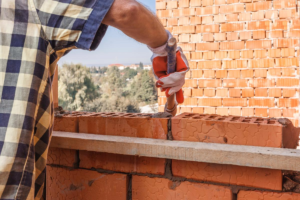Alta Climbing is a thrilling workout that builds strength, endurance and balance. It also tests your mental toughness.

In a world where climbing is rapidly becoming more popular, it’s important to think about how future generations might value the cliffs and mountains that we love. Will climbing have the same cultural significance that it did for previous generations?
Climbing is an exciting, adventurous sport that can be as simple or complex as you want it to be. It can involve ascending natural or man-made rocks, ice, snow, or even indoor walls. You can also choose to compete against others, or simply enjoy the thrill of the movement and the exhilaration of the heights. There are many different disciplines within the broad category of climbing, each requiring slightly different types of equipment and training.
When starting out, a good instructor is essential to help you learn the basic movements and techniques. It’s also important to get physical preparation, as climbing is a demanding and intense activity that will use muscles that are probably unfamiliar to you. A yoga session, breathing exercises, or other activities that improve balance and flexibility will help. It’s also a good idea to focus on building strength in your legs, as they will be doing the majority of the work.
Once you have the basics down, it’s time to start practicing outside. This will require a bit more planning, as you’ll need to decide whether to climb with a guide or go it alone, as well as research the mountain you’ll be visiting and find out which climbing companies offer guided trips. This is a great opportunity to ask other climbers for advice, as they’ll be able to tell you what the challenges and rewards are of each mountain, as well as give tips on getting there and what to bring.
During your outdoor practice, you’ll discover that the most important skill for climbing is keeping calm. It’s common for beginner climbers to become agitated or fearful of falling while they’re on the wall, but you can overcome this by learning to control your breath and relax your body. Practicing calming breathing exercises in yoga sessions or with your instructor will help you stay focused and calm, especially during difficult moments on the wall.
You’ll also need to learn the different commands used by climbers and their belayers (the person that holds their safety line). This will be essential when you eventually start climbing outdoors, as it will allow you to communicate with your belayer without looking at them.
Equipment
There are a few pieces of equipment that every climber needs to get started, including a climbing harness, rope and a full rack of protection. A PAS is also needed (a personal anchor system). The rest of the gear can be added as a climber gets more experienced. For more information on equipment, check out our comprehensive climbing equipment checklist.
The most important thing to remember is that a climber’s safety is always more important than any piece of equipment. Even a high-quality piece of equipment can fail, so never place too much faith in any single piece of gear. It is also a good idea to have a backup for any piece of protection, especially if you’re leading a route or doing a multi-pitch climb.
A hex, or hexentric, is a wedge-shaped passive protection piece used in trad climbing. It has a metal wire affixed to it, which clips into a crack in the rock. Hexentrics can be rotated to fit tightly into a crack or hole, and are much more durable than other forms of passive protection like chocks.
Spectra/dyneema rope is the standard for rock climbing, and meets specific UIAA standards for strength and durability. There are several different types of rope rated for different purposes, with different colors indicating their rating.
Climbing shoes have a wide variety of sole designs, ranging from very flat to very curved. The most advanced models have a cambered sole, which helps to concentrate the foot’s weight over the toes, for better placement and precision.
A belay device is used to prevent the climber from falling if they fall, by controlling the rope so they can be lowered slowly. There are two basic styles: tube-style belay devices and assisted braking devices.
A belay device is also essential for a lead climber, who must clip into a bolt to protect themselves from a fall. A lead climber must also know how to use a PAS (personal anchor system), which is an advanced form of belay, and how to build an anchor with slings and biners. A climber who doesn’t know how to build an anchor can be dragged away from the wall by a falling climber, and may even be pulled off the face of the rock.
Climbing Outdoors
Climbing outdoors is gratifying and challenging, but it also requires special preparation, more gear and greater expertise. In addition, outdoor climbing happens on natural rock formations that change over time due to weather and other factors.
Unlike indoor routes, outdoor ones are not set by route setters, so they can feel more organic and unstructured. Climbers must learn to read the rock, look for holds and make their own moves. This adds a different element of creativity to the sport and can make it more mentally stimulating.
Many new climbers start outdoors by doing so-called top-roping. In this style of climbing, the climber ties into one end of the rope and the belayer, who is attached to the other end of the rope with a belay device, takes in all of the slack. This allows the climber to fall only a few feet, giving him or her ample time to recover before getting lowered back down to safety by the belayer.
Once you’ve done some top-roping and built up your confidence, you can try leading a route, which means taking the first move. This can be scary, especially if the route is steep or a challenge, but it’s a great way to build your skills and gain confidence. You’ll need to know how to tie different types of knots, evaluate when and how you want your belayer to take in the rope and decide what kind of protection (climbing nuts, cams, quickdraws) you’ll need for your next route.
Whether you’re doing top-roping, leading or belaying, you need to wear a helmet designed specifically for climbing. They’re often more comfortable and secure than other types of headgear and they offer excellent protection in the event of a fall.
If you’re unsure about how to choose the right helmet, ask your gym’s staff for help or contact an REI Outdoor School class. The helmet should fit snugly, feel comfortable and sit flat on your head. It should have a hard outer shell and an internal strapping system that secures it to your harness. The straps should be snug but not tight or painful and the chin strap should be loose enough to allow you to speak clearly without having to raise your voice.
Climbing Indoors
Indoor climbing takes place in a controlled environment, often within a gym. It’s popular among those who have access to a climbing wall but can’t practice outside due to inclement weather. Climbing can benefit people of all ages and fitness levels, as it improves coordination and muscle strength, and has a significant psychological component.
Indoor facilities typically have padded floors and safety mats to protect climbers from falling. However, falls can still happen, particularly if a person loses control of their grip. Therefore, it’s important for climbers to know how to fall safely and that their climbing partners are able to catch them.
A good way to increase the safety factor of indoor climbing is to pair up with a partner, especially when starting out. A partner can help spot potential hazards and ensure that all the equipment is properly adjusted and secured before a climber starts to scale the wall. They can also act as a belay, controlling the rope to keep a climber safe in case of a fall.
During a climbing session, it’s important to spend some time warming up and stretching. Dynamic stretches, such as arm circles, leg swings, and shoulder rolls, can help loosen up muscles and increase blood flow to the joints and extremities. Another crucial element is to take the time to cool down after a climb and stretch again, focusing on the muscles that have been working the hardest.
When paired with a belay, indoor climbing is an excellent way to build strength and confidence in students. It can be an engaging activity for recess when the weather is bad and it allows students to work together in a fun, team-building exercise. Just make sure that anyone supervising a student on the climbing wall is familiar with proper belay techniques and knows the rules of the facility.
It’s important to be mindful of other climbers at the gym and avoid boisterous negative talk, such as shouting comments about a difficult route or cursing at a spinning hold. This can be distracting to other climbers and belayers, and it can also cause them unnecessary frustration if they can’t fix the problem themselves.








